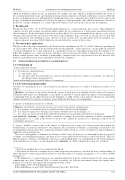Page 581 - SAIT Compendium 2016 Volume2
P. 581
IN 67 (2) Income Tax acT: InTeRPReTaTIon noTes IN 67 (2)
added tax de nition and the income tax de nition. For example, the value-added tax de nition includes the estates of deceased and insolvent persons, a partnership and in speci ed circumstances a branch or division of a person, while the income tax de nition does not. Although the two de nitions share some common features, this Note focuses only on the income tax de nition and should not be relied on for purposes of interpreting the value-added tax de nition. Section 1 of the TA Act contains a de nition of a ‘connected person’ which is cross-referenced to the income tax de nition.
2. Background
The Income Tax Act No. 113 of 1993 introduced the de nition of a ‘connected person’ into section *. This de nition is central to speci c anti-avoidance provisions which regulate the tax consequences of transactions entered into between related taxpayers. Such related-party transactions are more likely to be open to manipulation in order to secure a scal advantage than transactions entered into between unconnected parties, hence the need for speci c rules to deal with connected persons. The de nition became effective as from 21 June 1993. It replaced the previous de nition of a ‘connected person’ in section 12C(6) which was relevant only in the context of that section.
3. The law and its application
This Note re ects the law as amended by the Taxation Laws Amendment Act No. 31 of 2013 which was promulgated on 12 December 2013. Some of the provisions in the Act that apply the ‘connected person’ concept apply an expanded or restricted de nition of a ‘connected person’ as contained in section 1(1) depending on their respective purposes (see 3.10). The de nition of a ‘connected person’ identi es connected persons in relation to different types of taxpayers, namely, natural persons, trusts, members of partnerships, companies and close corporations. It does not, however, deal with deceased and insolvent estates and holders of shares in a company.†
3.1 Connected person in relation to a natural person 3.1.1 Paragraph (a)
‘Connected person’ means –
3.1.2 A relative [paragraph (a)(i)]
A relative of a natural person is a connected person in relation to that person. A ‘relative’ is de ned in section 1(1) as follows:
A ‘spouse’ is de ned in section 1(1) as follows:
A ‘spouse’ includes a person who is the partner of such person in a same-sex or heterosexual union which the Commissioner is satis ed is intended to be permanent. The assessment of whether a relationship is intended to last for an inde nite period, and is thus considered permanent, will be based on a review of all the facts and circumstances applicable to the particular case.
The word ‘consanguinity’ is de ned in the Chambers 20th Century Dictionary§ as ‘relationship by blood as opposed to af nity or relationship by marriage’ and in the Concise Oxford English Dictionary¶ as ‘of the same blood’. There are different degrees of relative consanguinity – the rst, second and third degrees of consanguinity are relevant for purposes of the de nition of a ‘relative’ (see the diagram in the Annexure). A ‘child’ is de ned in section 1(1) as follows:
* It has been amended since it was originally introduced.
† The holders of shares in a company are not connected persons in relation to each other by virtue of their holding of shares but may be connected persons in relation to each other under, for example, paragraph (a), (b) or (bA) read with paragraph (e).
‡ The de nition of a ‘connected person’ was amended with effect from the commencement of years of assessment commencing on or after 1 January 2010, to exclude a portfolio of a collective investment scheme in securities and a portfolio of a collective investment scheme in property from a trust.
§ New Edition 1983, W & R Chambers Ltd.
¶ Eleventh Edition (revised) 2006, Oxford University Press Inc. New York.
(a) in relation to a natural person— (i) any relative; and
(ii) any trust (other than a portfolio of a collective investment scheme in securities or a portfolio of a collective investment scheme in property)‡ of
which such natural person or such relative is a bene ciary;
‘[R]elative’ in relation to any person, means the spouse of such person or anybody related to him or his spouse within the third degree of consanguinity, or any spouse of anybody so related, and for the purpose of determining the relationship between any child referred to in the de nition of ‘child’ in this section and any other person, such child shall be deemed to be related to its adoptive parent within the rst degree of consanguinity;
‘[S]pouse’, in relation to any person, means a person who is the partner of such person—
(a) in a marriage or customary union recognised in terms of the laws of the Republic;
(b) in a union recognised as a marriage in accordance with the tenets of any religion; or
(c) in a same-sex or heterosexual union which the Commissioner is satis ed is intended to be permanent,
and ‘married’, ‘husband’ or ‘wife’ shall be construed accordingly: Provided that a marriage or union contemplated in paragraph (b) or (c) shall, in the absence of proof to the contrary, be deemed to be a marriage or union out of community of property;
saIT comPendIum oF Tax LegIsLaTIon VoLume 2 573


